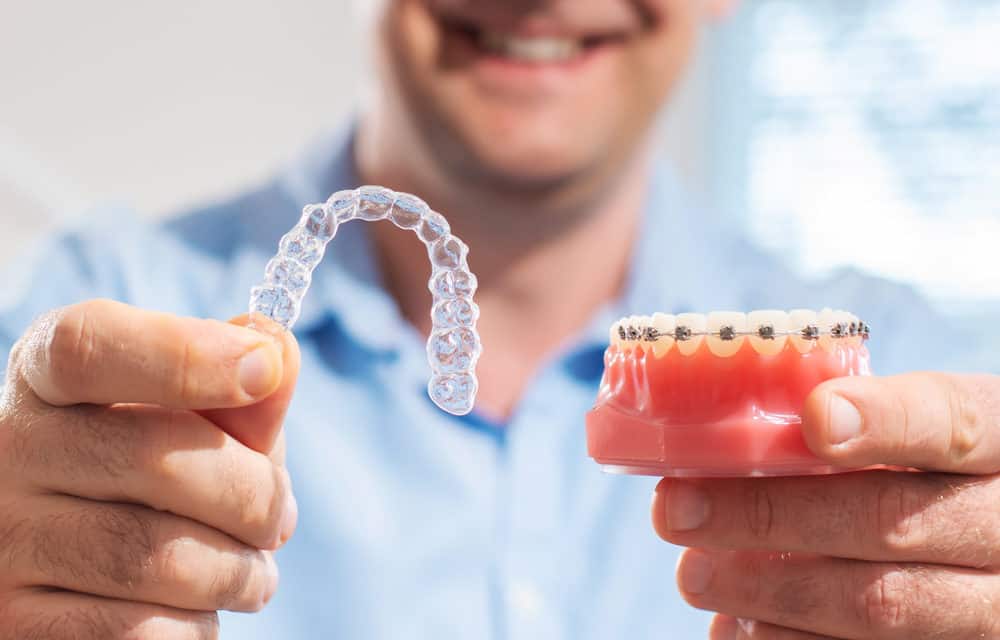Invisalign and braces are both popular orthodontic treatments that can correct many dental problems. But which one is faster? In this post, we’ll look at each treatment’s pros and cons and help you decide which is right for you. Keep reading to learn more!
1. Invisalign is often said to be a faster treatment than braces
Invisalign is a popular alternative to braces that uses clear, removable aligners to straighten teeth gradually. Invisalign is also said to be a faster treatment than braces, with most patients achieving their desired results within 12 months. In addition, Invisalign is nearly invisible when worn, so many patients feel more confident about their appearance during treatment. If you’re considering straightening your teeth, Invisalign may be a good option. Check this post for detailed guide on how do Invisalign work.
2. How long each treatment takes depends on the individual’s case
The length of time required for treatment depends on the individual case. Braces may be required for a more extended period than Invisalign. Still, Invisalign may require more frequent visits to the orthodontist. The type of braces also affects the treatment time, with metal braces taking longer to adjust than clear braces. Patients generally expect to wear braces for 18-24 months, while Invisalign treatment may take 12-18 months. However, every case is unique, and the orthodontist will be able to give a more accurate estimation of treatment time once they have assessed the patient’s individual needs.
3. Invisalign can sometimes be completed in as little as six months
For many people, getting braces conjures up images of metal wires and brackets. However, an alternative to traditional braces is now virtually invisible. Invisalign can sometimes be completed in as little as six months, making it a much faster option than traditional braces. However, it is essential to note that not everyone is a candidate for Invisalign. The best way to find out if Invisalign is right for you is to schedule a consultation with an orthodontist.
4. Braces may take up to two years for some people
For many people, the idea of wearing braces is not a pleasant one. However, braces may be the best option for those concerned about teeth alignment. Though they may take some time to get used to, braces are generally very effective in straightening teeth. In most cases, braces will need to be worn for at least one year, though it may take two or more to achieve the desired results for some people. For many, the benefits of having straight teeth outweigh the temporary discomfort of wearing braces. They are willing to wait however long it takes to achieve their goal.
5. Invisalign is removable, which makes it easier to eat and brush your teeth
If you’re considering Invisalign, one of the things you might be wondering about is how easy it is to keep your teeth clean. After all, when your aligners are in, they cover your teeth. And since they’re clear, you might be worried that people will be able to see any plaque or food that gets trapped. But the good news is that Invisalign is straightforward to keep clean. Because the aligners are removable, you can take them out whenever you need to brush or floss your teeth. And since they’re clear, any plaque or food particles will be immediately visible. You can ensure your teeth are sparkling clean before putting your aligners back in. So if you’re worried about how easy it is to keep your teeth clean with Invisalign, there’s no need to worry. This convenient and effective treatment lets you easily keep your teeth clean and healthy.
6. Braces are not removable, so you will need help from a parent or guardian to take care of them properly
When you get braces, it’s important to remember that they are not removable. That means you will need help from a parent or guardian to take care of them properly. In addition, you will need to visit your orthodontist every six weeks for an adjustment. With proper care, your braces will help to straighten your teeth and give you a beautiful smile.
Conclusion
So, which is faster – Invisalign or braces? The answer largely depends on the severity of your case and how well you follow your orthodontist’s instructions. Suppose you have mild to moderate tooth misalignment. In that case, Invisalign may be a good option because it typically takes less time than braces. However, if your teeth are severely crooked or crowded, braces will likely be more effective in correcting them quickly. Ultimately, the best way to find out is to schedule an appointment with Simply Dental Chatswood and discuss your options. Have you had experience with both Invisalign and braces? We want to hear from you! Share your thoughts in the comments below.


